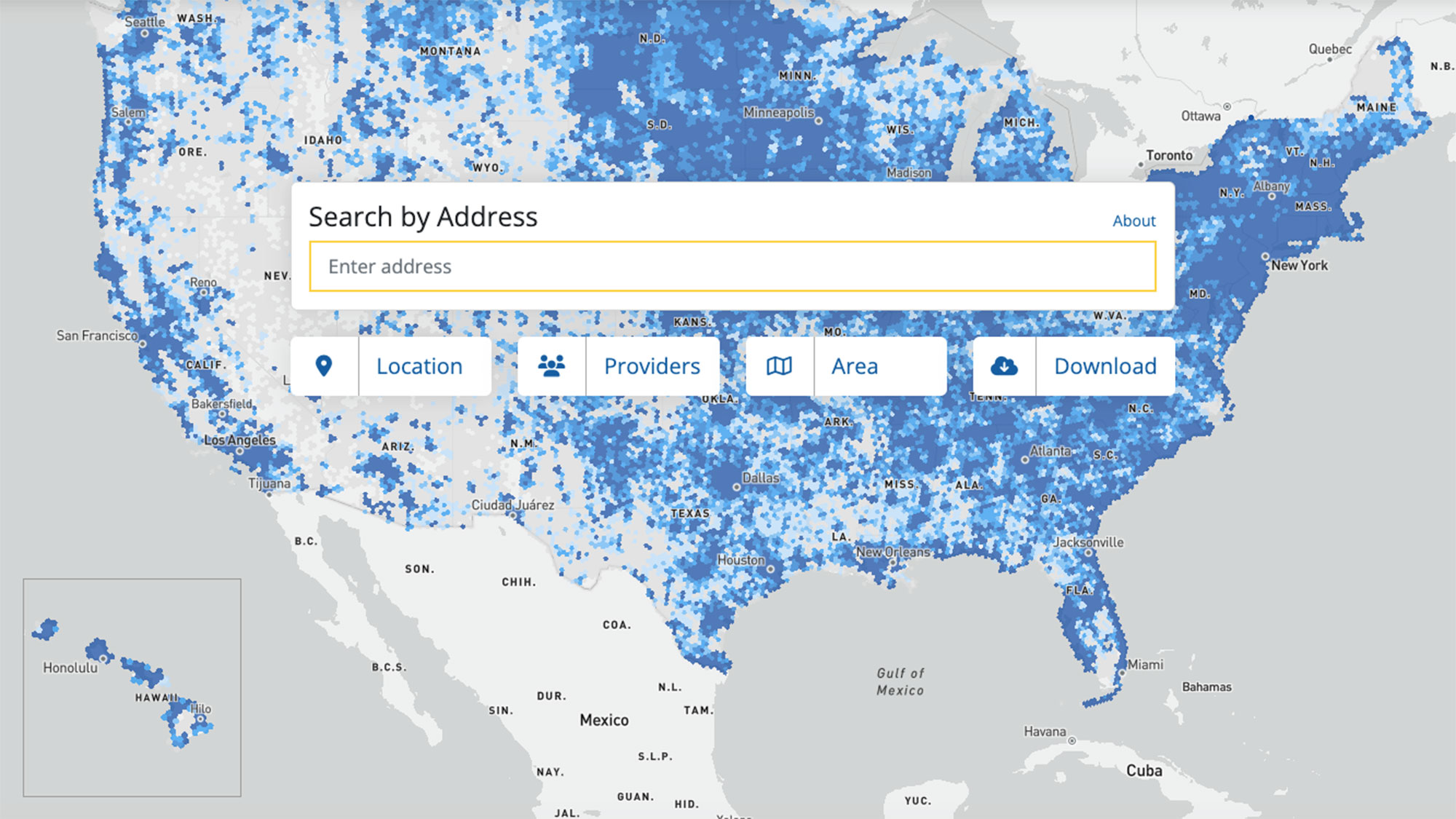

This week, the FCC released its most accurate, up-to-date, and granular map of high-speed broadband availability in the United States. It shows what homes and businesses have high-speed broadband available to them—and crucially, the 8.3 million that don’t. The agency calls it “another step forward” in its efforts to accurately map broadband access.
Measuring how many people have easy access to a high-speed internet connection for a country the size of the US is a major undertaking. Until last year, the FCC based its broadband availability maps on census blocks. It assumed that if one home or business in a block had high-speed internet service, they all did. As the FCC itself said in the press release announcing the latest versions of the maps, “Needless to say, this methodology left a lot to be desired. It overstated service nationwide.” Worst of all, because this kind of counting is least effective in areas with unequal broadband availability, it “also provided a less than accurate picture of unserved communities because it lacked the kind of granular data policymakers need if they want to address the digital divide.”
The good news is that the FCC’s current method is a lot more effective. While the agency previously counted data from 8.1 million census blocks, the new maps have more than 114 million identified locations that could potentially be connected to high-speed broadband. According to the press release, it has “identified every household and small business in the country that should have access to high-speed internet service.”
When the FCC first released a map based on this new data in November last year, it considered it to be merely a “starting point” and “a pre-production draft.” The data in the new map has been updated to reflect “challenges from consumers, states, localities, Tribes and other stakeholders” that have “been in full swing over the past several months.”
Apparently, the agency received challenges to the accuracy of the information it had used for more than 4 million locations (approximately 3.5 percent of all locations). These challenges could question the availability and speed of the service the map has listed for each home or business. So far, it has resolved 75 percent of them—updating the map with the correct information when necessary. It has also added more than one million additional locations. In total, it identified almost 330,000 more locations that lack high-speed broadband access. All this means that the current iteration is the “best and most accurate broadband maps ever built in the United States.”
Of course, while the map is more accurate, a lot of what it reveals isn’t good news. The main takeaway is that 8.3 million homes and businesses—or more than 7 percent of all the locations identified—don’t have any access to high-speed broadband of any kind. With so much of life and work moving online, the people in those places are at risk of being left behind.
It’s also worth noting that the FCC currently considers a connection with a download speed of 25 Mbps and an upload speed of 3 Mbps to be a high-speed broadband connection. That’s just not that fast—especially if there are multiple people in a house or business relying on the same connection. For example, the FCC recommends a minimum connection of 5 Mbps for streaming HD video and 6 Mbps for HD video teleconferencing. Just two or three people streaming Netflix or attending a meeting on Zoom could come very close to maxing it out—and that’s assuming you even get the full 25 Mbps. (For what it’s worth, the FCC chairwoman, Jessica Rosenworcel, has proposed increasing the definition of broadband to be 100 Mbps download and 20 Mbps upload, which is much more suitable for a household or business, though that hasn’t happened yet. And it would likely dramatically increase the number of locations without high-speed access.)
Either way, broadband access in the US is improving, and the Biden administration has repeatedly invested in enabling more people to have access to better internet. If you want to check out the maps for yourself, you can do so now on the FCC website. If you think that the speed data for your home or business is inaccurate, make sure to file a challenge!